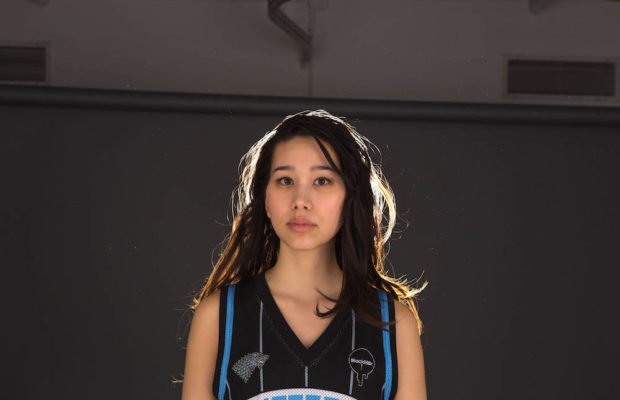
Right before beginning her fourth consecutive year on Warped Tour, we caught up with photographer Amanda Lynn Kim and she gave us a look inside how she got her start in the industry and shared some of her favorite pieces of work from over the years.
When did you start showing an interest in photography?
I started to show interest in film and photography at a very young age. When I was about 7, I used to arrange my stuffed animals into scenes, take a picture, rearrange for the next scene and so on. On a less cute note, I went to a Junior High School that had majors. Lucky for me, photography was an option and our school was the only one in NYC that had a dark room (at the time). I spent three years shooting and developing my own film there.
Have you taken any photography classes or were you self taught?
I am extremely grateful that I was able to take photography classes in Junior High using real film and a proper dark room. Don’t knock on NYC’s public school system! I also learned how to shoot using a manual film camera; it had a broken light meter, which forced me to learn about f-stops and shutter speeds early on. Later, I taught a photo class at my High School and ended up in Film School at Hunter College.
 What gear do you typically shoot with?
What gear do you typically shoot with?
I’m currently shooting with a Canon 6D. I have a wonderful Fujifilm x100s for candids and travel. For film, I have the same Canon AE-1 that I learned to shoot on and my prized Leica. I’m currently really into the Sigma Art series lenses.
A lot of young photographers have a mind set of “more expensive equipment, better photos” – do you agree with this idea?
I do not necessarily agree with this. Of course, better equipment will lead to crisper photos, but if the photographer doesn’t have any idea what they are doing, it will still look like garbage. Crisp garbage, but still garbage. My favorite series of photos that I’ve shot was actually with a film camera at a show. The camera is worth about $50 and has a broken light meter. I had to push the film to the next level in order to support the lack of light. Unfortunately, when it comes to concert photography, you do need to invest in fast glass, but there are a lot of entry level DSLRs that are amazing. The Canon Rebel series is proof. Also, cameras that cost thousands a few years ago have dropped in price and work just fine!
 What was the first show you ever photographed?
What was the first show you ever photographed?
I honestly am not too sure! But one of my favorite early photographs was from a disposable camera when I was 14 and shot Rancid at Warped Tour. It’s currently blown up and framed in my room.
When you first started out, did your taste in music impact what bands/artists you photographed and is that still something that happens today?
My taste in music definitely impacted the bands/artists I would shoot. I used to shoot for Buzznet and Pure Volume. I think the best part about shooting bands and artists that you’re familiar with is that you know when to anticipate a moment in the song that might give you a good shot. When you’re around these bands, you become friends and more opportunities pop up. However, I am having a lot of fun shooting non-rock bands lately!
 How would you describe your shooting style?
How would you describe your shooting style?
This is a tough question! I shoot everything from events to portraits and feel I have a different style for each. I’ve always been a fan of dramatic lighting in photos, as well as, high contrast. I grew up shooting film, so I try my best to emulate that feel. As I’ve grown as a photographer, I have started using controlled lighting in hopes of creating more moody pieces. My hope is to shoot in a manner that makes you want to keep looking at the photo and to think a bit more about what’s going on. I’m also progressing into more documentary series.
Out of your portfolio, what photograph are you the most proud of and why?
I definitely love these shots that I took of The Darkness. I shot them on ASA 3200 film. Someone in the photo pit came up to me and said, “Oh, those will be nice if they actually come out.” Lo and behold, they’re hands down my favorite. They’re gritty and, in my opinion, capture the feel of traditional rock concert photography.

Especially these past few years, the amount of photographers in the music industries has increased. Do you ever try and separate yourself from the group to stand out or is it something you don’t think about?
The community has definitely become a bit crowded. When tons of people are now applying for the same photo pass, you do want to stand out. However I don’t focus on this at all – I just try to worry about getting the results that I want.
What is the best advice you could give to young aspiring photographers?
Learn and love your craft. Shoot constantly. And remember who you’re shooting for first – yourself.
I wish you luck and feel free to reach out if you want to photo-nerd out 🙂
 Stay connected with Amanda: Instagram // Website // Twitter
Stay connected with Amanda: Instagram // Website // Twitter
Read the exclusive second part to our interview with Amanda in our brand new Warped Tour Issue.
Photos by Amanda Lynn Kim
Interview by Rachael Dowd





